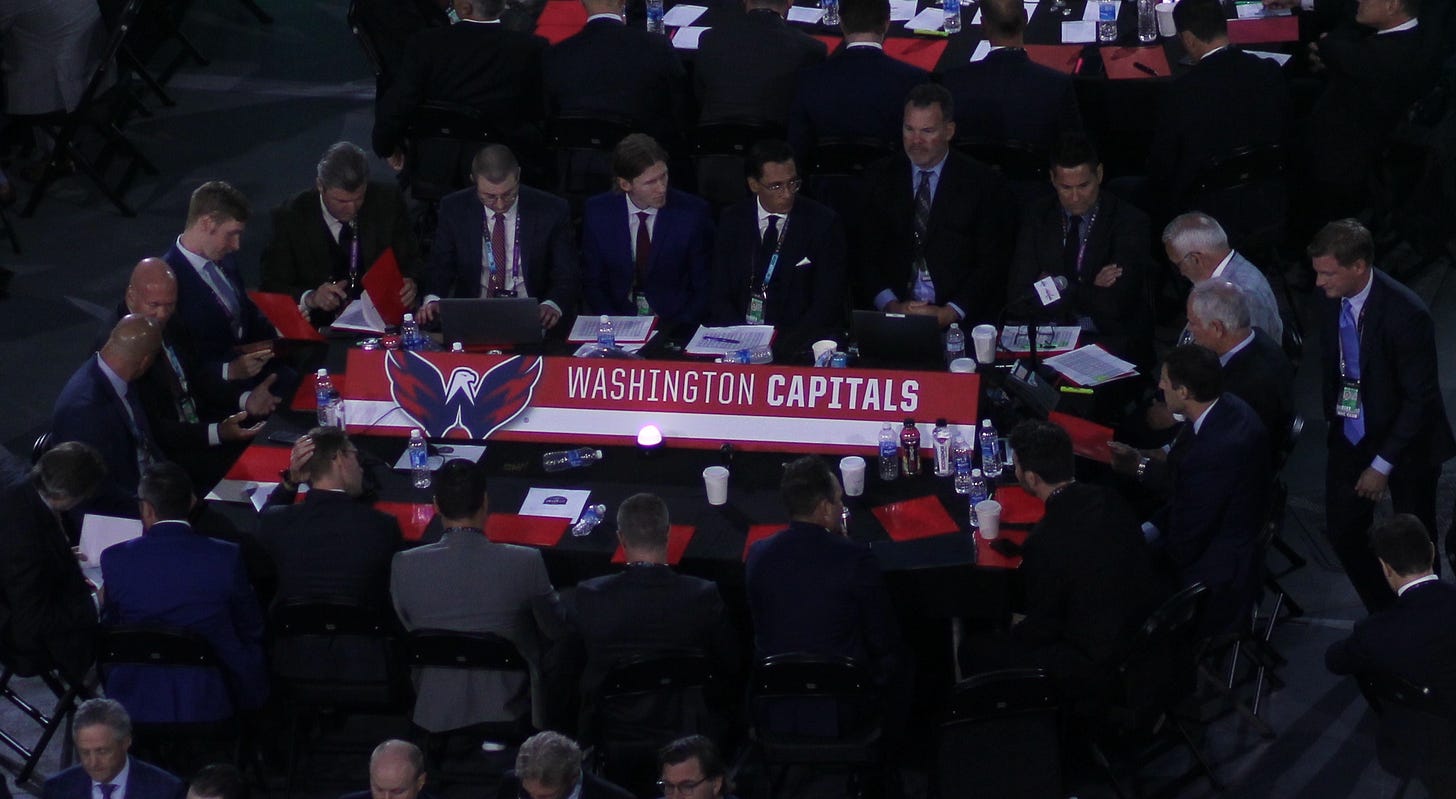Takeaways From The Capitals' Pre-Draft Availability & What To Know About Their Plan
The Washington Capitals offered a glimpse into what they’re thinking going into the 2025 NHL Draft.
ARLINGTON, V.A. — The Washington Capitals offered a glimpse into what they’re thinking going into the 2025 NHL Draft, as assistant general manager Ross Mahoney spoke on the team’s approach and plans for the weekend while sharing more on the prospect class.
Here’s what to know from Mahoney’s availability:
- This is the first legitimately decentralized draft in NHL history (2020 was remote due to COVID-19). There are pros and cons to teams not being at the draft with the prospects, who are gathered at Peacock Theater in L.A. for the festivities, but the front office seems to like it. Mahoney on why: “It gives you more freedom to talk. When you’re on the draft floor, that next table is right there with scouts and other teams and that. So it gives us a lot more freedom to speak freely, talk about things.”
- Washington owns the 27th overall pick for the fourth time in franchise history. Each time, they’ve used the No. 27 selection to take a defenseman, including Jeff Schultz (2004), Joe Finley (2005) and most recently, John Carlson (2008).
- The Capitals, however, aren’t going to draft by position and will maintain the same approach they’ve had in the past: take the best player available. Mahoney said there’s a good reason why:
"If you went by position, you run that risk of saying, 'Well, let's take a defenseman this year, we're a little light on defense' and then a forward goes and ends up being a much better player, you're probably kicking yourself after for not doing that," Mahoney explained, adding, "We've always tried to stick with taking the best player available, unless you're splitting hairs and we really thought there was a strong year that year for (a certain position)."
Mahoney pointed to the 2006 NHL Draft, where they took goaltenders Semyon Varlamov and Michal Neuvirth in the first two rounds, and then passed on Steve Mason later on because they’d already drafted two other goalies and instead went with Francois Bouchard and Keith Seabrook for the next two second-round picks before also taking Oskar Osala, Luke Lynes, Maxime Lacroix, Brent Gwidt and Mathieu Perreault.
- Looking at this year’s class, what stood out most to the Capitals’ front office was the “high-end” character and honesty that this crop of prospects showed. Mahoney said out of the two-plus decades he’s been in this spot, this was the “best group of kids” yet from the interview standpoint. What really set them apart was how they didn’t say they could play in the NHL tomorrow but admitted that they’d need some more time to develop, which was a big indicator of their realistic outlooks and promise, Mahoney explained.
- From a skill standpoint, though, Mahoney pointed out that this could be seen as a “lighter class” than previous years.



